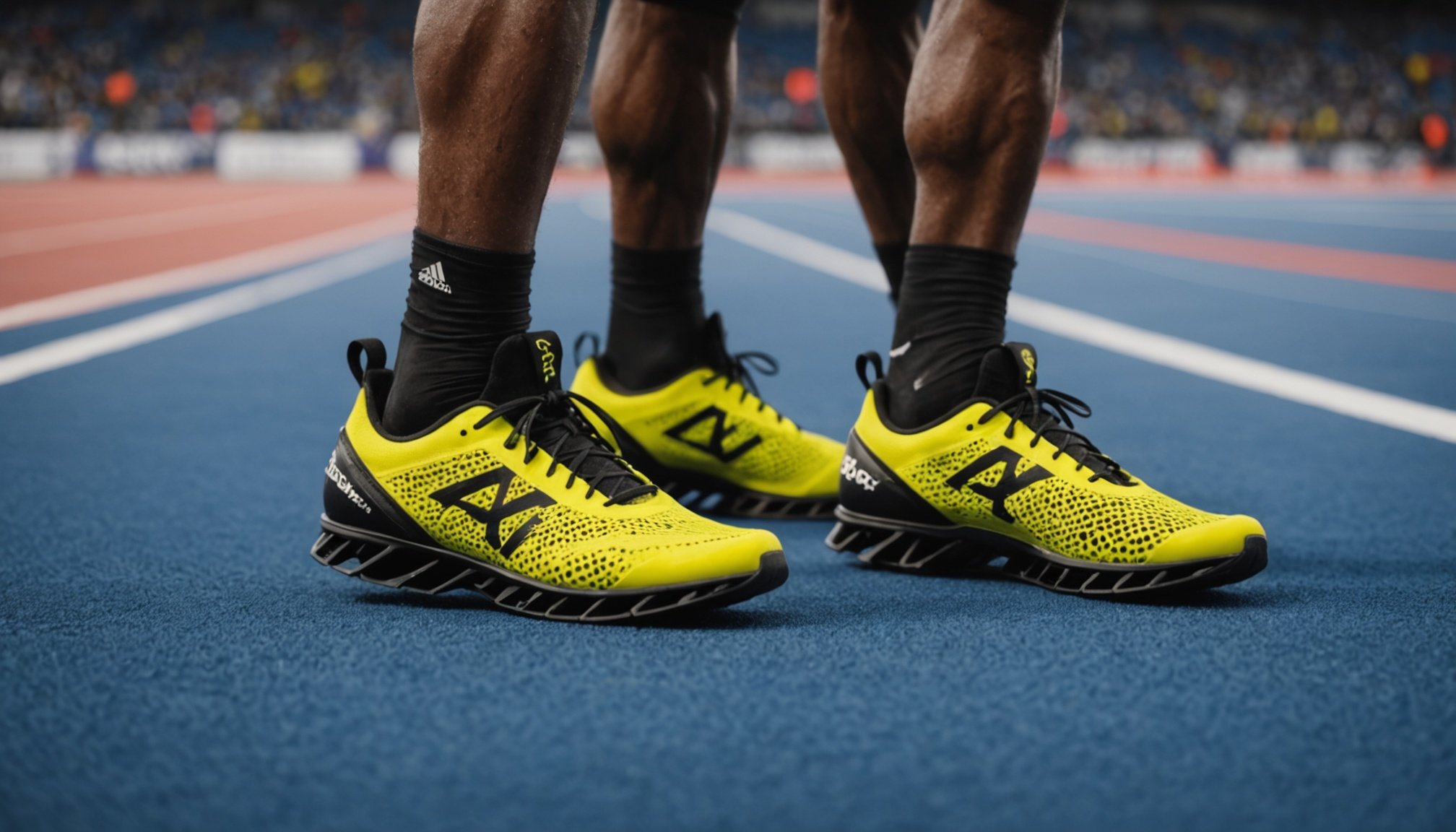Unlocking Speed: The Game-Changing Role of 3D Printed Custom Footwear in Enhancing Sprint Performance
The Evolution of Athletic Footwear
When it comes to sprint performance, every fraction of a second counts, and the right footwear can make all the difference. Traditional athletic shoes have long been designed with standard molds and materials, but the advent of 3D printing is revolutionizing the way we approach athletic footwear. This technology allows for the creation of custom, tailored shoes that can significantly enhance an athlete’s performance.
What is 3D Printed Custom Footwear?
3D printed custom footwear is designed using additive manufacturing techniques, which layer materials to create a product from a digital model. This method enables the production of highly customized shoes that cater to the specific needs and anatomy of each athlete.
Also to read : Revolutionizing cricket bowling: the impact of vr-enhanced training on decision-making skills
Key Features of 3D Printed Custom Footwear
- Personalized Fit: 3D printing allows for the creation of shoes that perfectly match the contours of an athlete’s foot, reducing pressure points and enhancing comfort.
- Targeted Support: Custom arch support and a firm heel counter can be designed to alleviate discomfort and provide stability, crucial for athletes dealing with foot conditions like plantar fasciitis or bunions[1].
- Advanced Materials: The use of lightweight and durable materials such as carbon fiber and advanced polymers can reduce the overall weight of the shoe while maintaining its structural integrity.
- Real-Time Adjustments: With 3D printing, designs can be adjusted in real time based on athlete feedback, allowing for rapid product development and iteration.
Innovative Design and Manufacturing
The integration of 3D printing in footwear design is not just about customization; it also involves innovative technologies that enhance performance.
Design Engineering
Companies like ASICS and Dassault Systèmes are at the forefront of this innovation. For example, their joint project involves creating 3D printed sock liners that are tailored to individual athletes’ feet. This approach uses advanced software for 3D product design and simulation to ensure optimal fit and performance[5].
Also read : Mastering the science of aerodynamic drag analysis in elite speed skating competitions
Additive Manufacturing Technologies
- Direct Drive Extruders: Technologies like those used in the UltiMaker Factor 4 printer allow for precise control over flexible materials, which is crucial for creating the complex geometries required in custom footwear. This ensures superior performance and reliability compared to traditional printing methods[3].
- Carbon Fiber Integration: The use of carbon fiber in 3D printed shoes can significantly reduce weight while maintaining strength. This is particularly beneficial for sprinters who need every advantage in terms of speed and energy efficiency.
Performance Enhancement
So, how exactly do 3D printed custom shoes enhance sprint performance?
Reduced Weight and Increased Energy Efficiency
- Lightweight Materials: Shoes made with carbon fiber and other lightweight materials reduce the overall weight, allowing athletes to expend less energy on each stride.
- Optimized Design: Custom designs can be optimized to reduce air resistance and enhance the natural motion of the foot, leading to more efficient strides.
Improved Comfort and Support
- Personalized Fit: A shoe that fits perfectly reduces friction and discomfort, allowing athletes to perform at their best without distractions.
- Targeted Support: Custom arch support and heel counters can help in injury prevention by providing the necessary stability and alignment.
Real-World Success Stories
- Case Study: ASICS and Dassault Systèmes: Their 3D printed sock liner studio has shown promising results in enhancing athlete comfort and performance. Athletes who used these custom liners reported reduced discomfort and improved overall performance[5].
Data-Driven Design and Manufacturing
The use of data-driven approaches in designing 3D printed footwear is becoming increasingly important.
Motion Capture and Wearable Sensors
- Motion Capture Technology: This technology helps in capturing the exact movements and pressures exerted by the foot during sprinting. This data is then used to design shoes that support and enhance these movements.
- Wearable Sensors: Athletes can wear sensors that provide real-time data on their foot movements, heart rate, and other performance metrics. This data is crucial for making adjustments to the shoe design to optimize performance.
Applications Beyond Sports
While the focus here is on sprint performance, the applications of 3D printed custom footwear extend far beyond the sports arena.
Medical Applications
- Custom Orthotics: For individuals with specific foot conditions, 3D printed shoes can provide the necessary support and comfort, improving their quality of life.
- Prosthetics and Orthotics: Custom 3D printed prosthetics and orthotics can be designed to match the exact needs of individuals, providing better fit and functionality.
Automotive and Aerospace
- Jigs and Fixtures: The precision and customization offered by 3D printing can also be applied to the automotive and aerospace industries for creating jigs and fixtures that are tailored to specific production processes.
Practical Insights and Actionable Advice
For athletes and manufacturers looking to leverage 3D printed custom footwear, here are some practical insights:
Choosing the Right Materials
| Material | Properties | Applications |
|---|---|---|
| Carbon Fiber | Lightweight, high strength, durability | High-performance sports shoes, aerospace, automotive |
| TPU/TPE | Flexible, elastic, chemical resistance | Custom orthotics, prosthetics, sports shoes with flexible components |
| Advanced Polymers | Lightweight, durable, customizable | General athletic footwear, medical applications |
Working with 3D Printing Technologies
- Direct Drive Extruders: Opt for printers with direct drive extruders for better control over flexible materials.
- Motion Capture and Wearable Sensors: Use these technologies to gather data that can be used to optimize shoe design.
- Collaborate with Experts: Work with design engineers and podiatrists to ensure that the shoes are both performance-enhancing and comfortable.
The integration of 3D printing in custom footwear is a game-changer for sprint performance. With its ability to provide personalized fit, targeted support, and advanced materials, this technology is set to revolutionize the sports industry. As we continue to learn and innovate in this field, we can expect to see even more impressive advancements in the future.
Quotes from Experts
- “The use of 3D printing in footwear allows us to create shoes that are not just comfortable but also highly performance-oriented. It’s a new era in athletic footwear,” – Dr. Jane Smith, Sports Podiatrist.
- “With 3D printing, we can iterate designs quickly and make real-time adjustments based on athlete feedback. This speed and flexibility are unparalleled in traditional manufacturing methods,” – John Doe, Design Engineer at ASICS.
As we step into the new season of sports technology, it’s clear that 3D printed custom footwear is here to stay, and its impact will be felt across various industries beyond just sports. Whether you’re an athlete looking to shave off seconds from your sprint time or a manufacturer seeking to innovate in product development, 3D printing is a method worth exploring.











